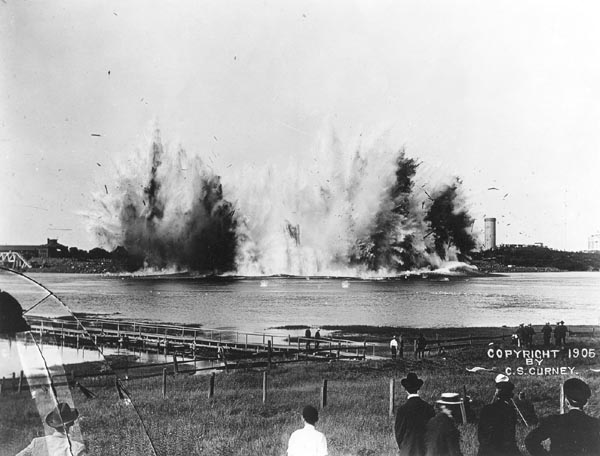
National Gypsum Company (NGC) is the focus for today's post on Industry along the Piscataqua River. NGC operates a gypsum wallboard manufacturing plant at 9 Michael J. Succi Drive in Portsmouth, NH. The plant is one of two wallboard production plants on the banks of the Piscataqua. It's been in operation since the early 1970s and underwent a major update in 1985.
The Google map below shows a bird's eye view of the Portsmouth plant. You can clearly see the outline of the long straight-line wallboard production process on the upper right of the map. The National Gypsum website features a cool animation of the wallboard production process that somewhat explains why wallboard plants are laid out this way.
View Larger Map
Click here for a better bird's eye view from maps.bing.com
NGC is a privately held company headquartered in Charlotte, North Carolina. According to the company's website, they operate several facilities spread across the US and in Canada including 17 wallboard plants, 7 mines and quarries, 7 interior finishing products plants, 3 paper plants, and 2 research facilities. They employ around 3,000 people and their annual revenues are estimated to be between $350 million and $500 million. NGC also operates the largest gypsum quarry in the world, located outside Halifax, Nova Scotia.
Gypsum wallboard plants are often located near shipping terminals to facilitate efficient delivery of the bulky gypsum rock that they use as a raw material. In addition, wallboard manufacturing plants require large amounts of energy to run kilns, rock dryers, rock crushers, and other equipment. I stumbled on this 2004 NH DES permit report on the plant and was surprised to learn just how energy intensive wallboard manufacturing is. Apparently, the NGC plant burns large amounts of fossil fuels in the production process and as with power plants, the facility's emissions are carefully monitored by state officials.
View of the National Gypsum wallboard facility from the Piscataqua River
The city of Portsmouth tax assessor's website shows the facility's assessment at $8.7 million with a $147,697 property tax bill for 2008. According to nh.gov employment data, the Portsmouth, NH plant employs between 50 and 99 full-time workers.
Links








































